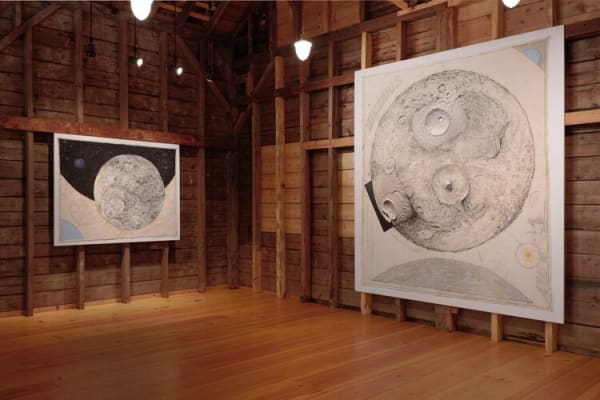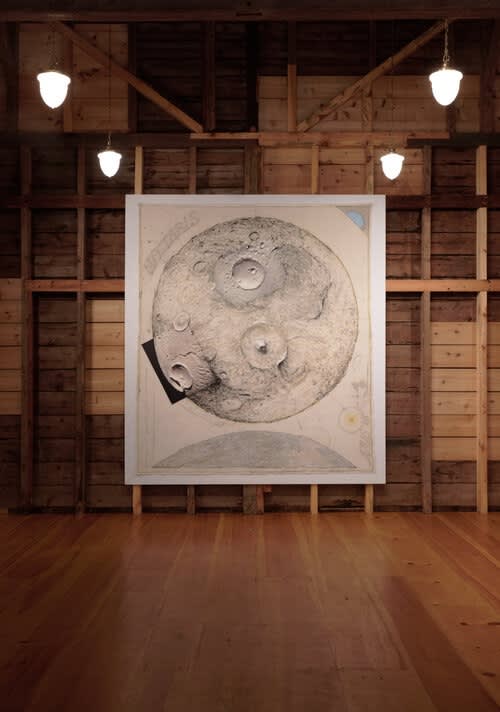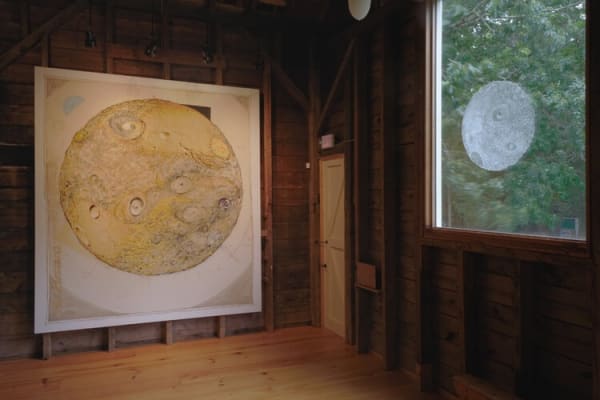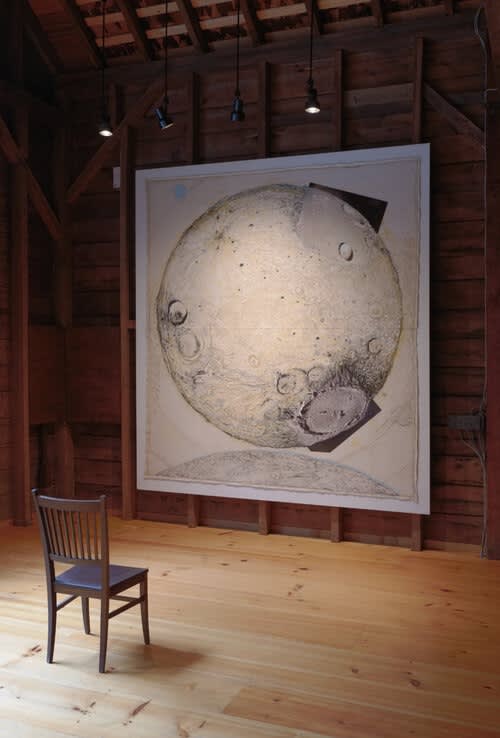The Arts Center at Duck Creek is pleased to announce Lunarium featuring paintings by artist Bryan Hunt. This exhibition will open to the public on July 11 and will remain on view through August 2. Gallery hours are Thursday, Friday, Saturday & Sunday 2 - 6pm and by appointment.
The works presented in Lunarium are from a series of paintings which began as working diagrams for large scale sculptures that are not yet realized. Each of the three 10 foot high works shown depict a planet, and a painting, built of an amalgam of imagery and information from Hunt’s varying bodies of work. The fictional planets are anchored by black and white photographs that dictate the scale of the sphere and define its arc. At a glance, the collaged photographs could easily be mistaken for NASA’s mosaics of satellite telemetry, but they are photos of Hunt’s small hand-sculpted ceramic orbs shot in natural light. As the true materials of these clay surfaces are revealed to the viewer, Hunt’s adeptness at relational aesthetics kicks in and the displacement of scale has the effect of “shrinking the viewer, or expanding the context” as he says.
Much of Bryan Hunt’s two-dimensional drawings and paintings are clearly the work of a sculptor, featuring elegantly blocked negative space, carved lines, and surfaces that describe the movement of water or weight of stone. But these paintings offer us more. Like cartographers throughout history, Hunt emphasizes the visual and conceptual hierarchies in of each work with traditional mapping text and diagrams.
“They’re about drawing and mapping, the kind of freedom you’d have if you wandered around recording a fictional topography. It’s a made up journey: then I go back and paint that topography.” Hunt recalls, in a BOMB magazine interview with Jack Stephens. “They’re fictional places made up of features like plateaus, canyons, volcanoes, impact craters, ice fields and so on… Every mark I make is an event in that place and that place is an extraterrestrial orb. I’d like viewers to feel that this is as close to an astronomical object as they have ever been. At the same time, the works are paintings: there are drips, splashes and pours intertwined with circles, shadows and lines.”
On the occasion of the artist’s Foundation Kajikawa Exhibition in Kyoto Japan, art critic Jerry Saltz writes of Hunt, “A poet of paradox, he casts a kind of spell over you and transports you, like some kind of Gulliver, though whole worlds of intimate scale and monumentality, to the land of levitating densities and disembodied mass. He is a poet of those things physical, material and formal, almost an alchemist of the earth - making metal flow like water and great mast hover, mysteriously, in space. He makes the unseeable world around us suddenly appear graspable, palpable and understandable.”
July 11, 2020




